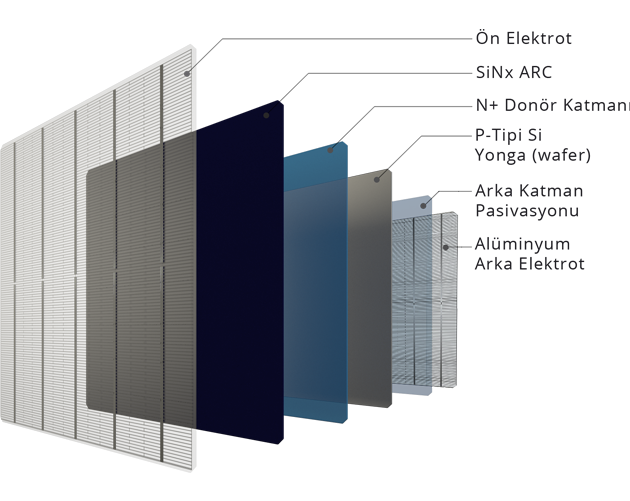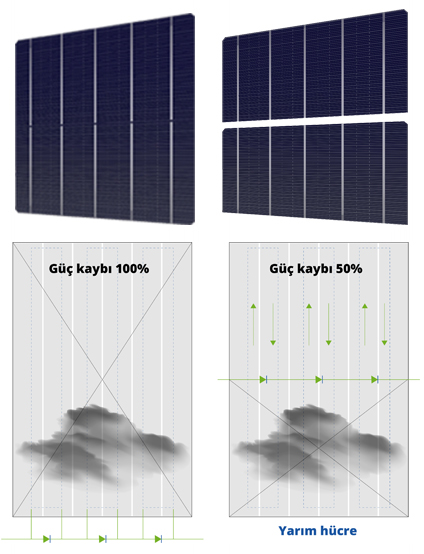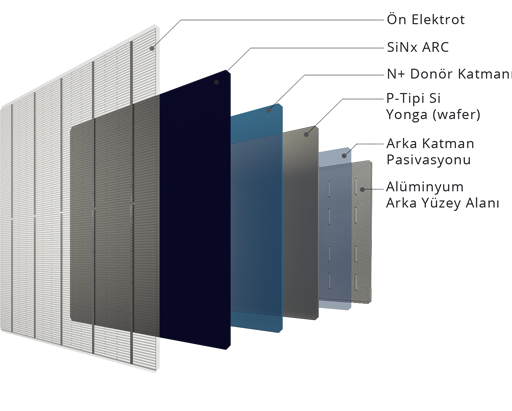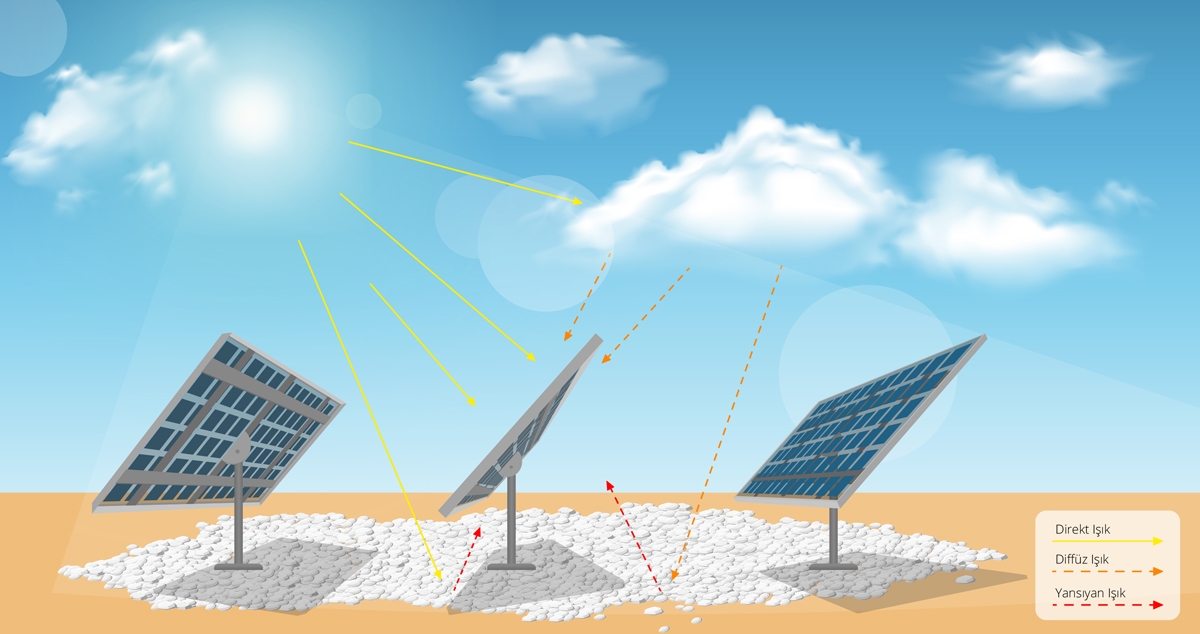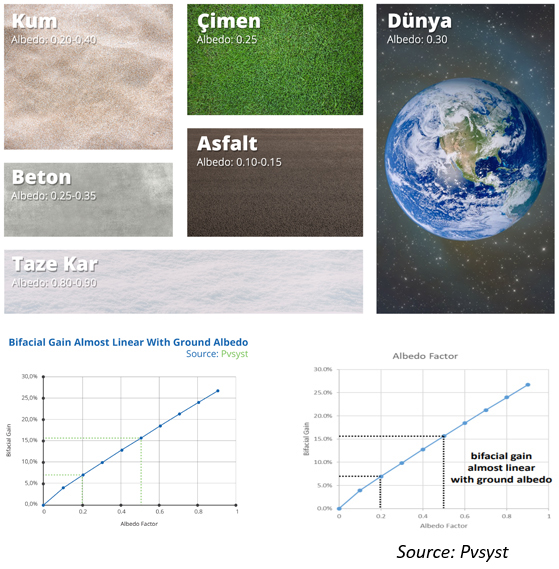Half-Cut Cell Technology
• High Efficiency
+5 ~ 10 W
Reduced Resistive losses
When the cell is cut in half (158.75 x 78.375 mm), the amount of electrical current is halved which leads to lower resistive losses
• Lower Operation Temperature & Lower Hot-Spot Impact
Higher Reliability Of The Module
• Higher Shade Tolerance
Higher Performance In Partial Shadow Conditions
BIFACIAL PERC CELL TECHNOLOGY
PASSIVATED EMITTER, REAR CONTACT
• Improved Panel Performance
≥%0 only front
Bifacial PERC has a significant advantage which has the potential to absorb additional sunlight by rear surface.
• 5BB Front/Rear Electrode Design
More Transparent Rear Side
At rear side, Al back surface field is replaced by Al grid.
• Bifaciality Factor %75-%80

